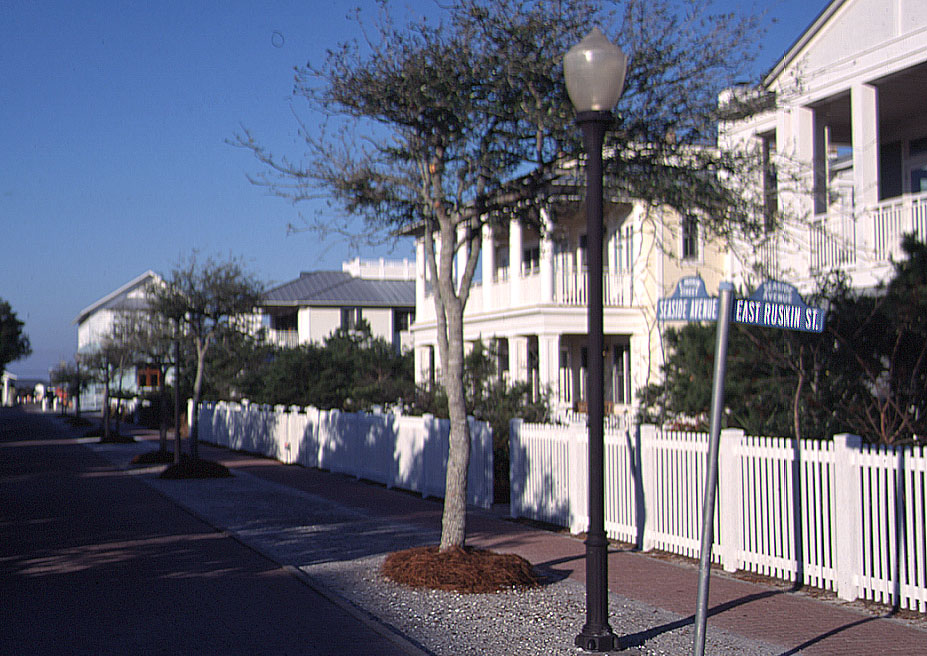
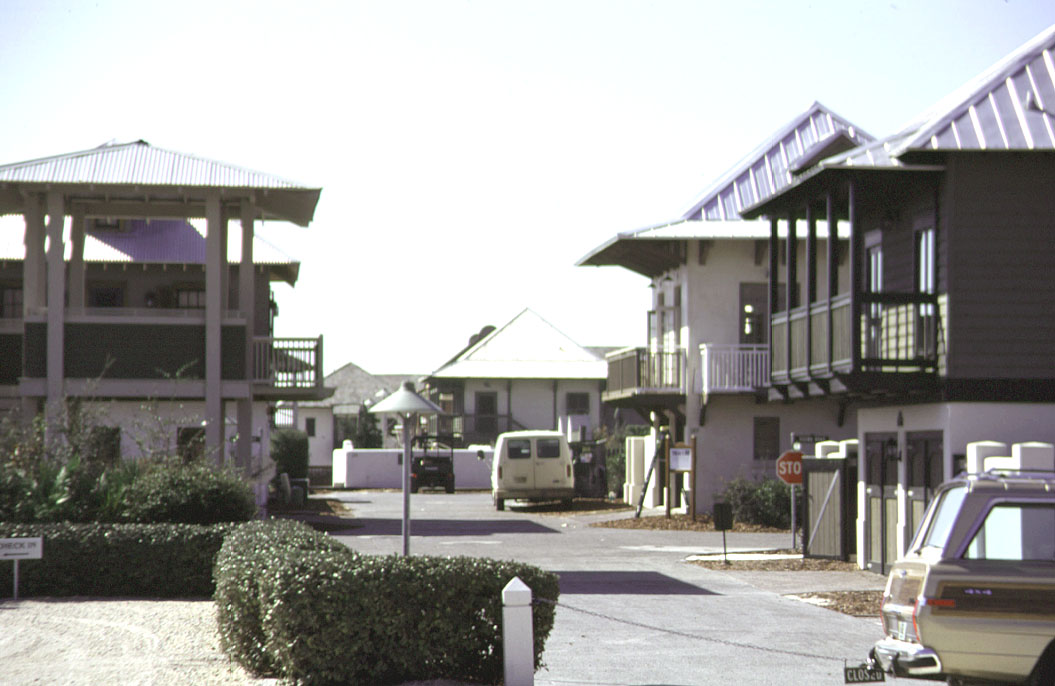
My host at Seaside described its sister development under construction a few miles away, Rosemary Beach, as using earth tones to replace Seaside's pastels, but there is a more significant difference: the house forms chosen for Rosemary Beach are not so automatically familiar. The planners coded for vernacular forms, but not mid-American vernacular.
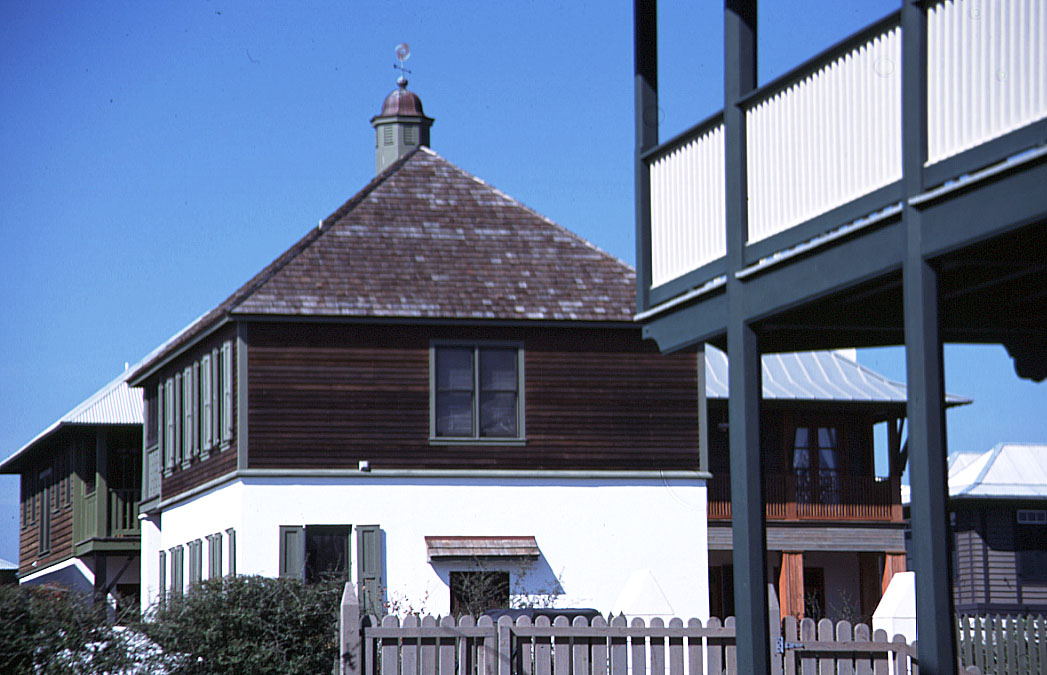
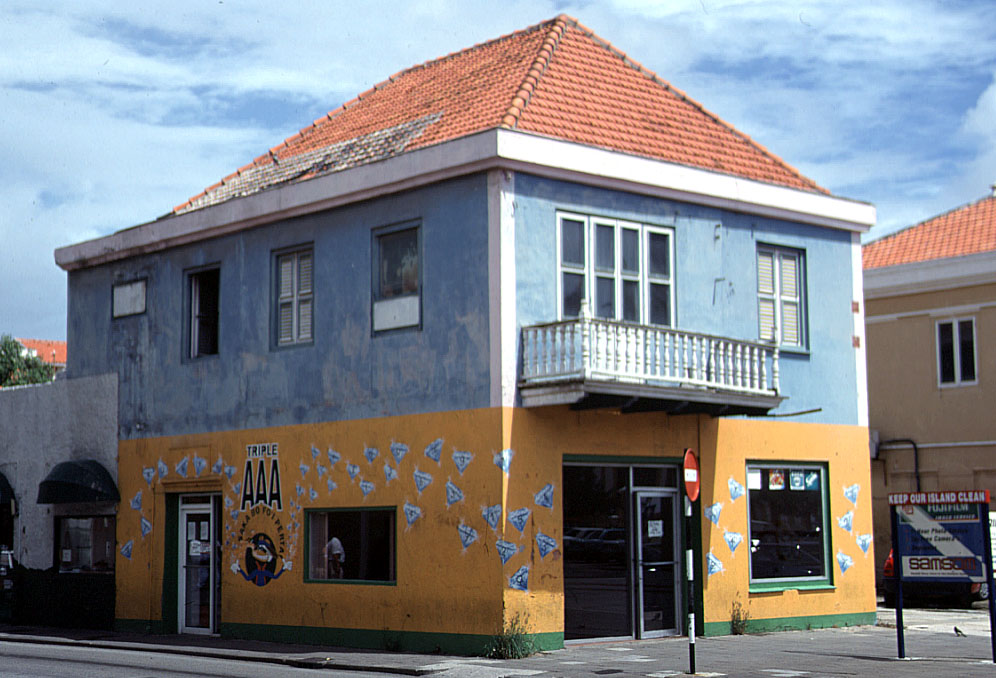
About 45% percent of the lots are slated to have what the salespeople (but not the architects) describe as West Indian style homes -- one is pictured above along with a house from a West Indian island. The remaining 55% percent are divided among local but less recognizable American archetypes, with 15% from St. Augustine, Florida, and the rest from Charleston and New Orleans. The houses tend towards cubical or rectangular solids with peaked or hipped roofs.
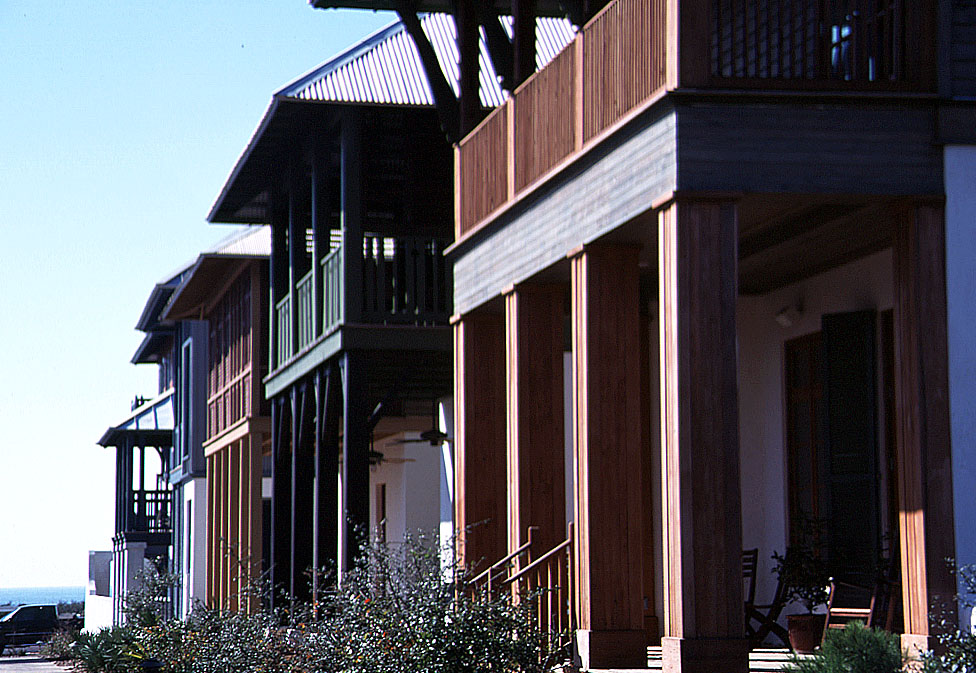
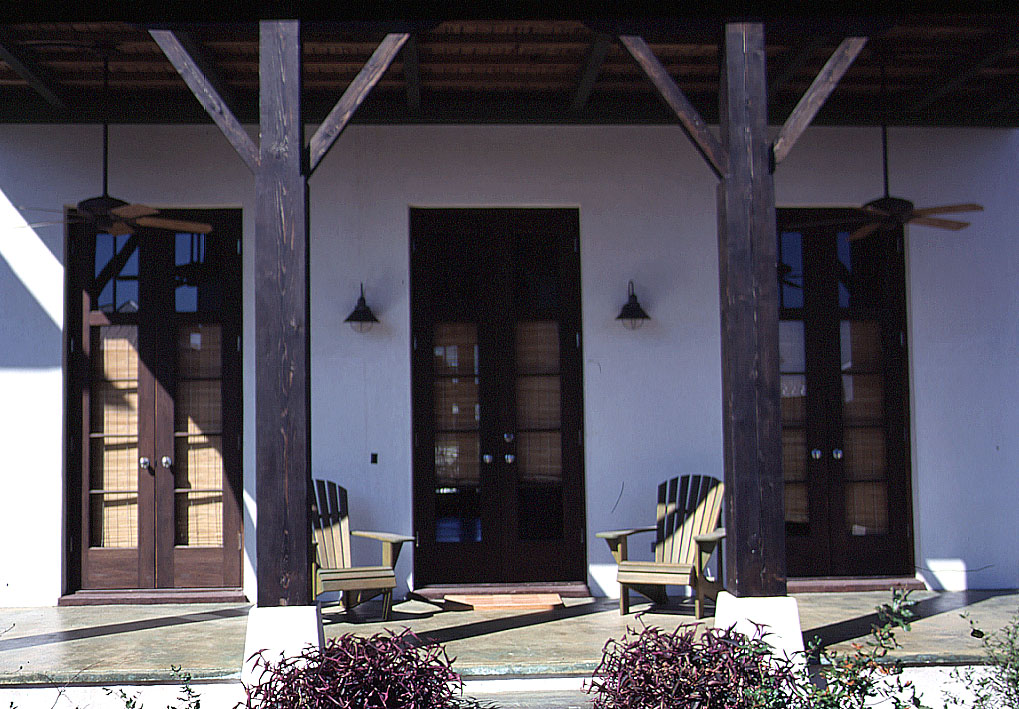
Porches are smaller than at Seaside and are usually recessed into the house rather than added on to the main volume. There are no Georgian details or classical columns, and no towers. The effect is strikingly different than Seaside's instant recognizability. Besides being darker, the new development's houses seem lower and heavier, more part of the earth than Seaside's fanciful towers. Seaside's house forms are as light hearted as they are pastel colored, Everytown's dream. In contrast, Rosemary Beach's house forms seem solidly serious.
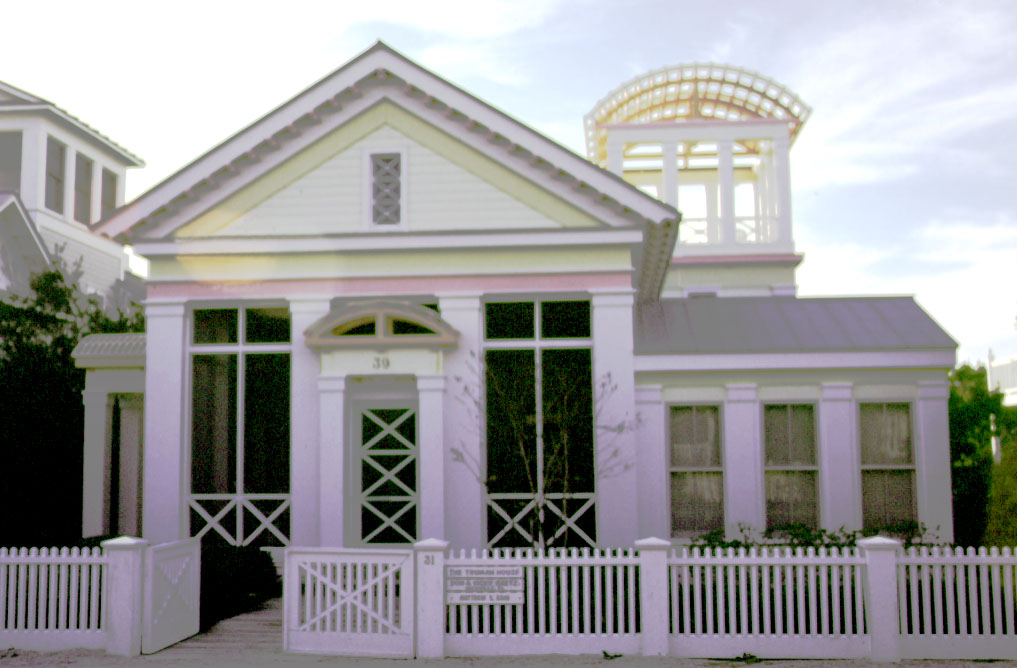
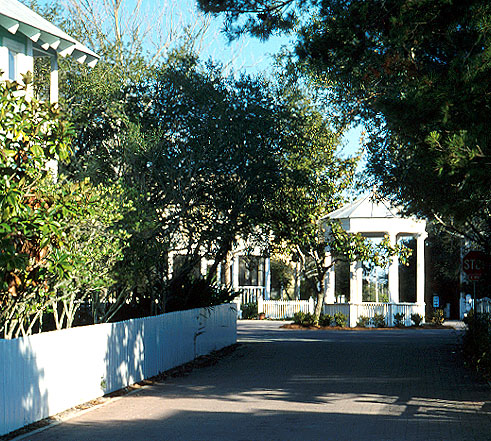
If Rosemary Beach had been built before Seaside I doubt it would have received the attention that Seaside's recognizability and fancy attracted. Still, Rosemary Beach shows that a New Urbanist development can earn premium prices without the standard traditional architectural styles -- at least if it is on a beach. The furthest back lot at Rosemary Beach sells for fifteen times the original price of Seaside's most expensive lots, and you don't want to know the price of shorefront.
(c) David Kolb, 1 August 2001